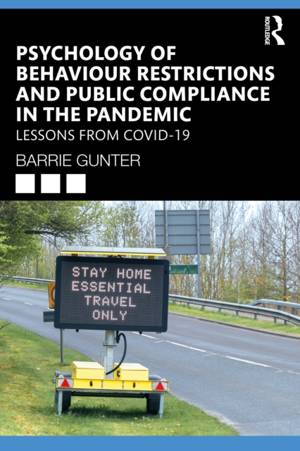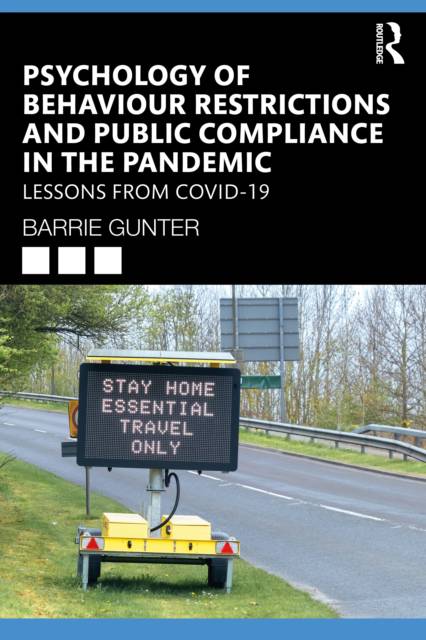
- Retrait gratuit dans votre magasin Club
- 7.000.000 titres dans notre catalogue
- Payer en toute sécurité
- Toujours un magasin près de chez vous
- Retrait gratuit dans votre magasin Club
- 7.000.0000 titres dans notre catalogue
- Payer en toute sécurité
- Toujours un magasin près de chez vous
Psychology of Behaviour Restrictions and Public Compliance in the Pandemic
Lessons from Covid-19
Barrie GunterDescription
This volume examines the topic of compliance with COVID-19 restrictions, and the non-pharmaceutical measures taken by governments in attempts to bring the pandemic under control.
Discovery that COVID-19 was largely transmitted through the air meant that public health strategies were needed to limit close physical contact between people. Epidemiological modelling offered initial interventions to tackle the rate of spread, but to be effective these measures were dependent on widespread public adoption and compliance. This book examines the key theories and empirical approaches to behavioural change and compliance, and reviews research on their relative effectiveness in driving public behaviour. Author Barrie Gunter considers four principal models used: nudge theory, social identity-group processes theory, theory of planned behaviour and the capability-opportunity-motivation-behaviour (COM-B) model. Gunter weighs the pros and cons of each, offers commentary on lessons that can be learned from their application during the pandemic, and what they may have to offer in a triangulated approach, theoretically, methodologically and in terms of policy making.
Examining not just the extent of compliance but also the psychological drivers of this behaviour over time, this is essential reading for students and researchers in psychology, public health and medical sciences, and policy makers assessing government strategies, responses and performance.
Spécifications
Parties prenantes
- Auteur(s) :
- Editeur:
Contenu
- Nombre de pages :
- 206
- Langue:
- Anglais
- Collection :
Caractéristiques
- EAN:
- 9781032228150
- Date de parution :
- 12-07-22
- Format:
- Livre broché
- Format numérique:
- Trade paperback (VS)
- Dimensions :
- 156 mm x 234 mm
- Poids :
- 303 g

Les avis
Nous publions uniquement les avis qui respectent les conditions requises. Consultez nos conditions pour les avis.






